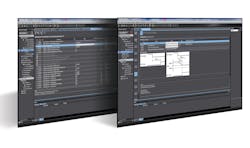How sensors can help manufacturers to improve overall equipment efficiency
To improve overall equipment efficiency (OEE), manufacturing operations must closely evaluate the underlying causes of downtime and explore strategies to prevent or minimize it. By separating downtime into planned and unplanned categories, manufacturers can quickly identify barriers to achieving target OEE metrics. Planned downtime includes activities such as changing tooling for a product change or stopping a machine to unload finished products and load raw materials. Unplanned downtime, on the other hand, can be caused by material shortages or machine malfunctions like failed components or jams.
Strategies for minimizing downtime
One strategy for minimizing downtime is to design machines with a larger workspace that allows for multiple zones. This way, one zone can be dedicated to manufacturing while the operator works in another zone, unloading finished products and loading new raw materials. To ensure operator safety in this setup, devices like laser safety scanners and servos with safe limited position (SLP) can be used. These devices allow the operator to work in one zone while the machine operates in the other, minimizing downtime.
Continuous machine operation during adjustment and simple maintenance is also important. For example, if a product jams in the machine, a servo with safe limited speed (SLS) function can be used. This safety-rated motion function allows the machine to continue running at a reduced speed while the jam is being cleared. Again, operator safety is a priority, and devices like laser safety scanners and safe servos can be used to monitor safe zones and ensure the well-being of the operator.
When it comes to unplanned downtime, mean time to repair (MTTR) is a key metric. It measures the average time it takes for maintenance teams to bring a piece of equipment back online after an unplanned decrease in performance. One of the biggest contributors to MTTR is the time it takes to analyze and fix the problem. Fortunately, advancements in technology can help reduce MTTR.
By using products with inherent intelligence and integrating them into an industrial network, error codes can be sent directly to the machine automation controller. This allows the controller to identify the failed device and the cause of the failure, displaying this information on a human-machine interface (HMI). With this information, operators or maintenance personnel can quickly initiate repairs or replacements, minimizing downtime and resuming machine operations promptly.
The HMI can also provide visual representations of the machine, indicating the precise location of the device and offering insights into potential causes of error. In some cases, videos demonstrating how to fix simple problems can be displayed on the HMI, enabling operators to be self-sufficient and reducing the need to call maintenance for every issue.
OEE-focused processes can store parameters for devices in the machine's controller, eliminating the need for a separate computer to download parameters. This streamlines the process of device replacement and parameter updates, saving valuable time during maintenance.
Implement predictive maintenance
Implementing predictive maintenance is another effective strategy for reducing unplanned downtime. Predictive maintenance involves using data and analytics to predict when equipment is likely to fail or require maintenance. Continuous monitoring of various parameters and performance indicators, such as temperature, vibration and pressure, can help identify potential issues before they cause downtime. Advanced sensors and monitoring systems are often used to collect real-time data from the equipment.
For example, motors in machines can be equipped with motor condition monitors that track current, temperature and vibration to detect abnormal load conditions, bearing wear and insulation breakdown. These monitors can communicate directly with the machine's control, providing valuable information for maintenance and allowing for timely repairs or replacements. Similarly, devices like capacitors can be monitored for signs of aging, enabling scheduled maintenance instead of unexpected failures during production. Thermal imaging technology can also be used to detect hot spots in power panels, allowing for proactive maintenance and preventing failures.
Incorporating artificial-intelligence (AI) or machine-learning (ML) technology can further enhance equipment efficiency. This technology can monitor devices like air cylinders, ball screws and conveyor belts, learning their normal operation and detecting anomalies that could lead to shutdowns or process disruptions.
Summary
Overall equipment efficiency is a critical metric for assessing the efficiency and productivity of equipment and processes in manufacturing and production industries. By understanding the factors that impact machine performance and identifying the root causes of losses, organizations can make informed decisions to reduce and eliminate these losses. Preventive maintenance plays a vital role in ensuring equipment remains in good working condition, increasing productivity and contributing to the overall efficiency and success of manufacturing and production operations.
By prioritizing the enhancement of OEE, organizations can streamline operations, increase efficiency and achieve better overall productivity and profitability. By focusing on availability, performance and quality, organizations can uncover inefficiencies and implement strategies to optimize processes, reduce downtime and enhance equipment usage. The use of advanced technologies such as predictive maintenance, intelligent devices and AI can further improve OEE and drive continuous improvement in manufacturing and production operations.
Greg Dieck is product manager, automation technology, at Omron Automation. Contact him at [email protected].
About the Author

Leaders relevant to this article:

